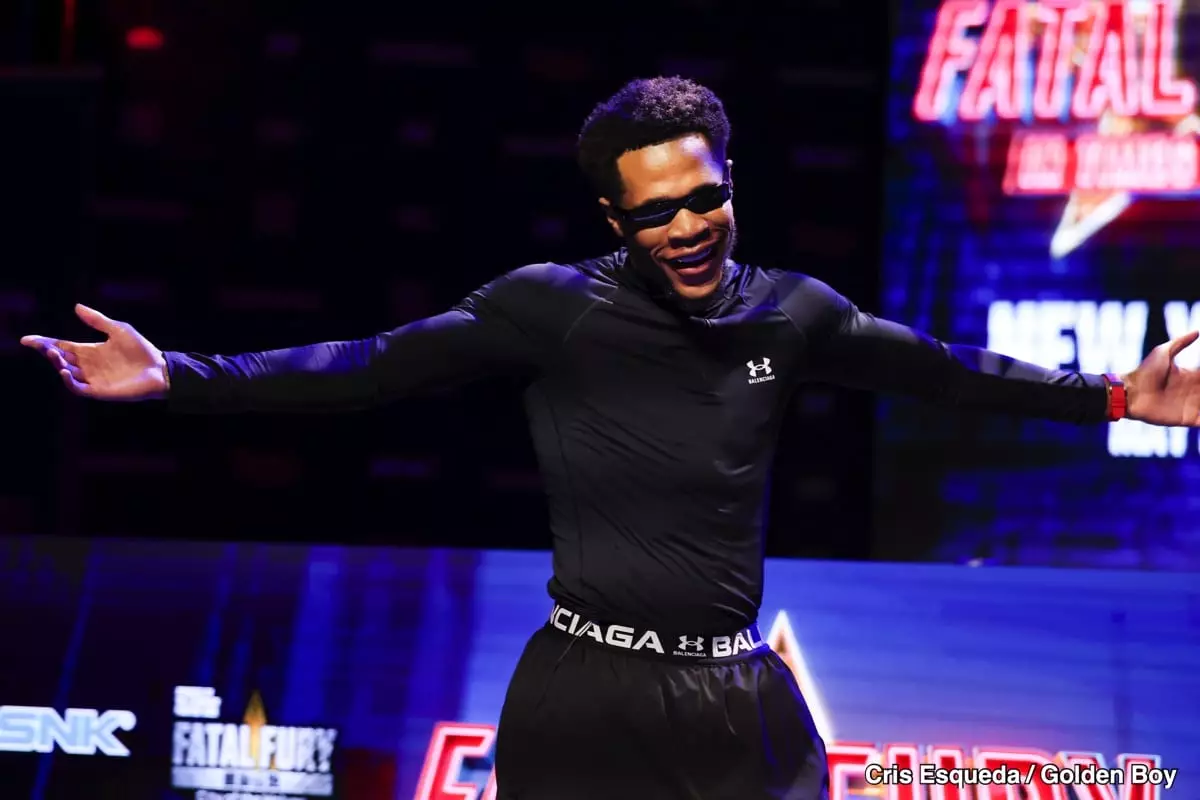The world of boxing is as much about the athlete’s prowess in the ring as it is about the narratives crafted outside it. Recently, a clash between Bill Haney, father and coach of boxer Devin Haney, and media personality Todd Grisham during a press conference has sparked discussions surrounding the responsibilities of sports journalists. This incident serves as a case study in the often fraught relationship between fighters, their families, and the media, highlighting the expectations that come with public representation and the realities that often contradict them.
Bill Haney’s confrontation with Grisham encapsulates a common but troubling dynamic: the desire for media figures to present athletes in a glorified light, often overshadowing the nuanced and challenging experiences those athletes face. Bill accused Grisham of not portraying Devin as the “youngest undisputed champion” and failing to showcase his resilience and accomplishments adequately. This invocation of Devin’s title and his prior achievements suggests a defensive posture often seen in parental figures of athletes, reflecting a protective instinct mingled with the commercial pressures that boxing inevitably endures.
The Fallout from Public Perception
The fallout from Devin Haney’s previous loss to Ryan Garcia is a testament to how quickly public sentiment can shift in the sports arena. While athletic competence is critical, the psychological aspect of being an athlete is equally significant. Grisham’s pointed inquiries during the press conference, particularly regarding Devin’s “chin” in light of past performances, are indicative of a media landscape that prioritizes sensationalism over sportsmanship. Such questions can linger in the public’s mind, shaping opinions and fueling narratives that may not accurately reflect the athlete’s true abilities or character.
Devin’s response, emphasizing his resilience, highlights the profound impact of media portrayal on an athlete’s mental state. The pressure to not only perform but also to be celebrated or respected in the media can weigh heavily, especially when the narrative against them is crafted from moments of vulnerability. Boxer’s careers are often dissected in real-time, with every win or loss subjected to the scrutiny of both fans and reporters alike. This constant evaluation not only underlines the importance of accurate representation but also reveals how a single press interaction can skew the public’s perception of an athlete, irrespective of their past achievements.
A Clash of Perspectives: The Press and Athletes
The altercation highlights the reciprocal responsibilities between media and athletes. While journalists like Grisham seek engaging content and audience interest, their approach can inadvertently harm the athletes’ reputations. A question probing for doubt may inadvertently shift perceptions from an athlete’s strength to their weaknesses, creating an imbalanced portrayal. Bill Haney’s frank comments reflect a passionate defense of an athlete whose talent is overshadowed by narratives of failure. In his outrage, he brings to light a broader issue facing athletes in high-pressure situations—that of maintaining integrity in an environment rife with bias and sensationalist tendencies.
Grisham’s attempts to defend his line of questioning reveal an underlying tension often felt in the industry. This dialogue illustrates the hypocrisy where while the media seeks respect and acknowledgment for their role, they simultaneously engage in practices that belittle and question the legitimacy of athletes’ accomplishments. The media’s role should be one of empowerment, acting as a bridge between the audience and the competitors. However, when questions shift to become tools for scrutiny rather than celebration, the integrity of sports reporting is called into question.
Power Dynamics in the Sport
The power dynamics at play between athletes and the media can create a landscape of conflict that is detrimental to both parties. Bill Haney’s insistence on being respected and recognized stems from a place of investment—something that transcends personal pride. It’s about an entire legacy, family sacrifice, and the ongoing struggle for recognition in a highly political arena, where narratives are often manipulated to favor sensational stories over equitable representations.
Importantly, this confrontation also amplifies the disparity in the treatment of fighters based on demographics, public persona, or media perception. The dynamics of fan interaction, as suggested by Bill’s mention of Hispanic audiences favoring Garcia, reveal how deeply rooted biases can influence the entire ecosystem of boxing narratives. The framing of athletes extends beyond individual competitions; it encapsulates socio-cultural conversations that continue to evolve with each fight.
In this light, the exchange between Bill Haney and Todd Grisham becomes more than a simple media oversight. It’s a vital conversation on respect, representation, and the impact of media narratives in shaping athletes’ careers and legacies within and outside the harsh, unforgiving ring.

